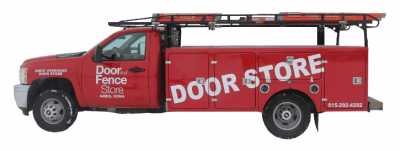Security is of the utmost importance for many industries and applications, whether it’s a healthcare facility, a government office, or an industrial warehouse. Use the following quick guide to building access control to learn how to implement this system.
Choose the Right Access Control System
The system of your choosing will define how secure the facility will be. Several systems exist to choose from based on the level of security you need, how much you can afford, and the simplicity of use for employees.
Mobile Device Access
The rise of smartphones has revolutionized access control systems by introducing mobile device access options. This approach utilizes a user’s mobile device as their access key, leveraging technologies such as NFC (Near Field Communication) or BLE (Bluetooth Low Energy).
Not only do these systems afford convenience, but they also offer heightened security. Mobile credentials are much harder to duplicate than traditional keys or cards that you and your team can manage remotely.
Electronic Access Systems
Electronic systems bridge the gap between mechanical simplicity and advanced security features. They utilize keycards, fobs, or codes to grant or deny access.
You can program these systems to allow access only during certain times and provide detailed records of entries and exits, enhancing security audits and monitoring capabilities. Plus, they are more scalable than mechanical systems, allowing easy management of many users across multiple access points.
Biometric Systems
Biometric systems are at the forefront of access control technology, which requires unique physical characteristics such as fingerprints, iris patterns, or facial recognition for entry. This type of system offers the highest level of security by ensuring only specific individuals receive access to the facility it is safeguarding, virtually eliminating the risk of unauthorized access through stolen or replicated credentials.
Biometric systems can integrate with other security measures for an extensive solution. Keep in mind that this is a costly option to purchase and for installation.
Establish Access Levels
Not all employees need unrestricted access to every facet of the business. Establish well-defined access levels tailored to specific job roles and responsibilities.
Enable high-ranking officials’ comprehensive access to all areas, so they can oversee the overall functioning of the organization. Mid-level or lower-level staff members might only need limited access to specific systems or data relevant to their tasks. This level of precision ensures that sensitive information remains secure while granting appropriate access.
Implement Reinforced Security Doors
The access control systems alone won’t stop potential threats from entering the facility. You must also have commercial steel entry doors installed. They’re crucial for securing the most vulnerable or sensitive areas within the facility.
Steel security doors have reinforced frames and hinges that are impenetrable. Their rugged construction can be a fit for both indoor and high-risk outdoor environments. Plus, they’re entirely customizable to suit the access control system of your choosing.
This quick guide to building access control is just the beginning! However, the Door and Fence Store can help with one area of this project: steel entry doors. Visit our website to see all the amazing qualities our reinforced steel doors offer that will perfectly fit with your new security system.








